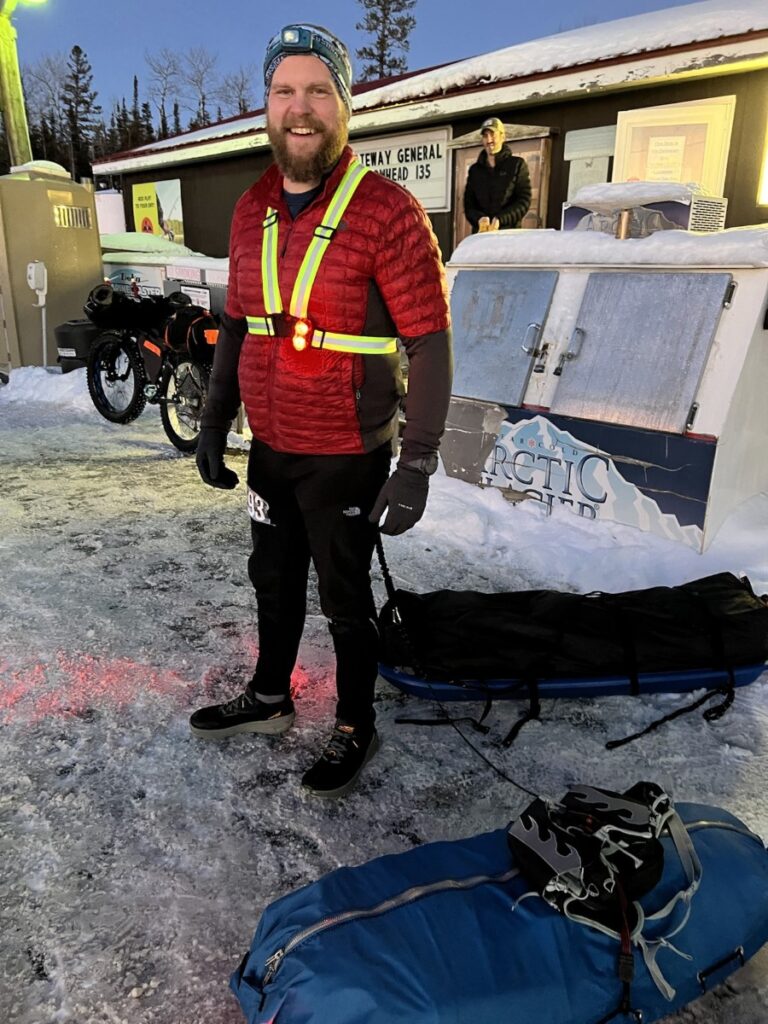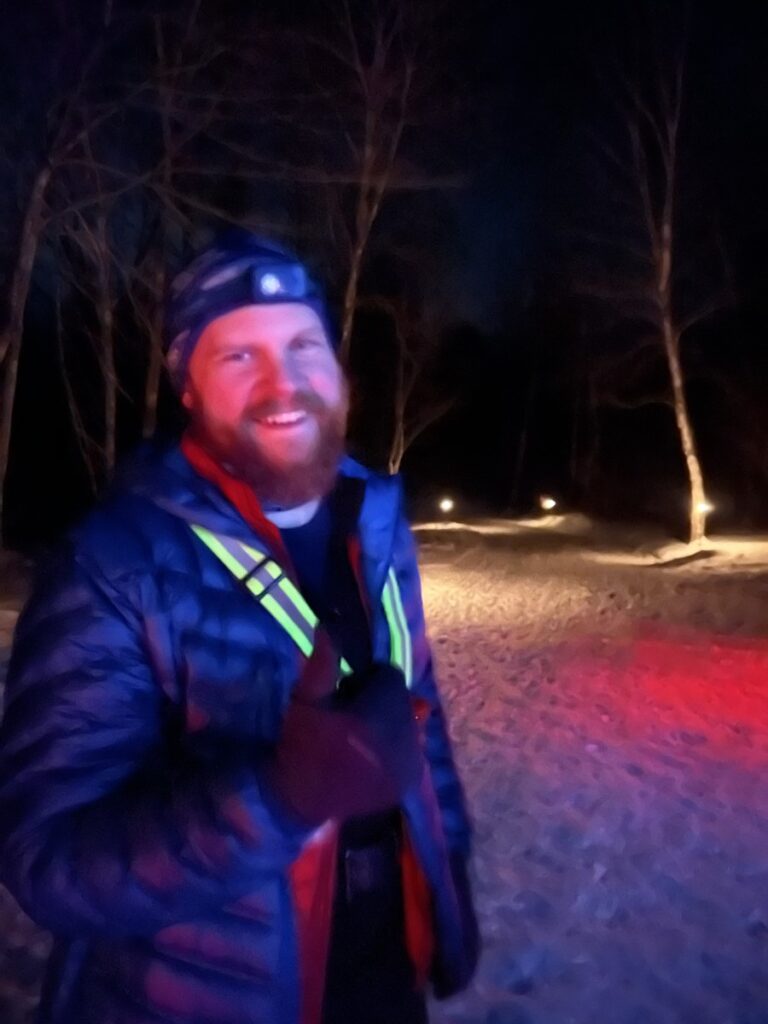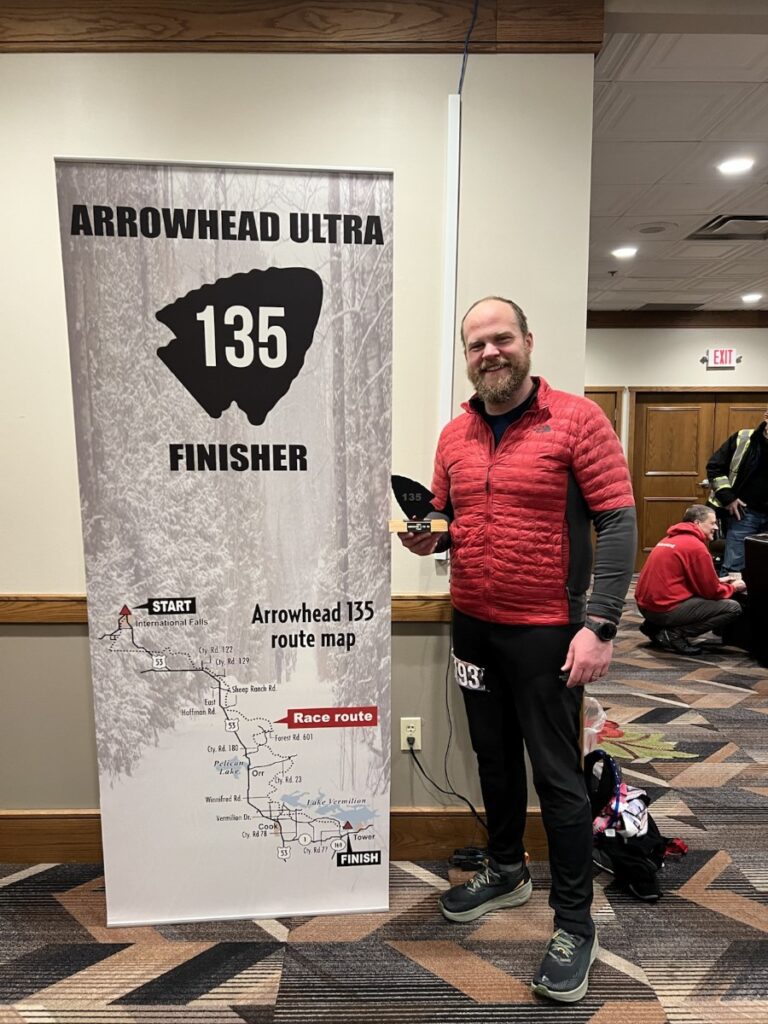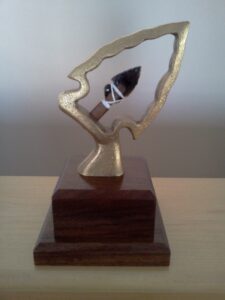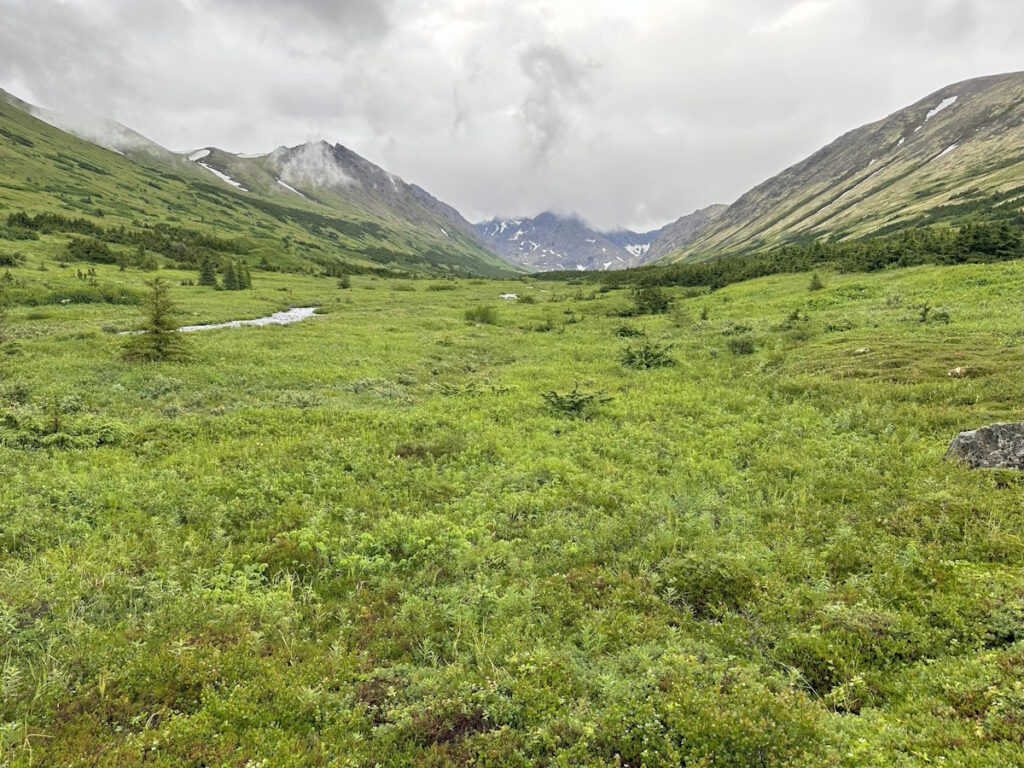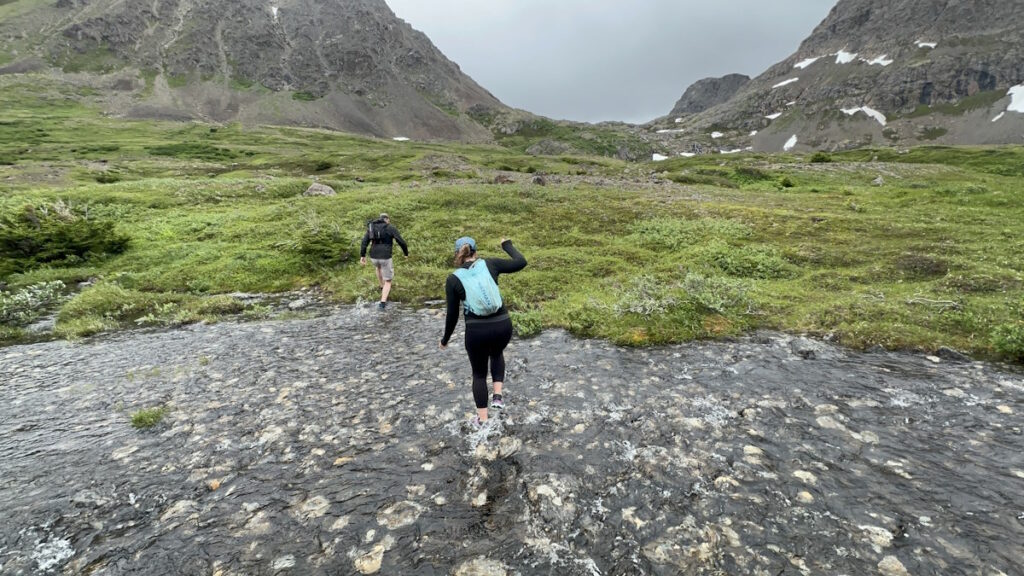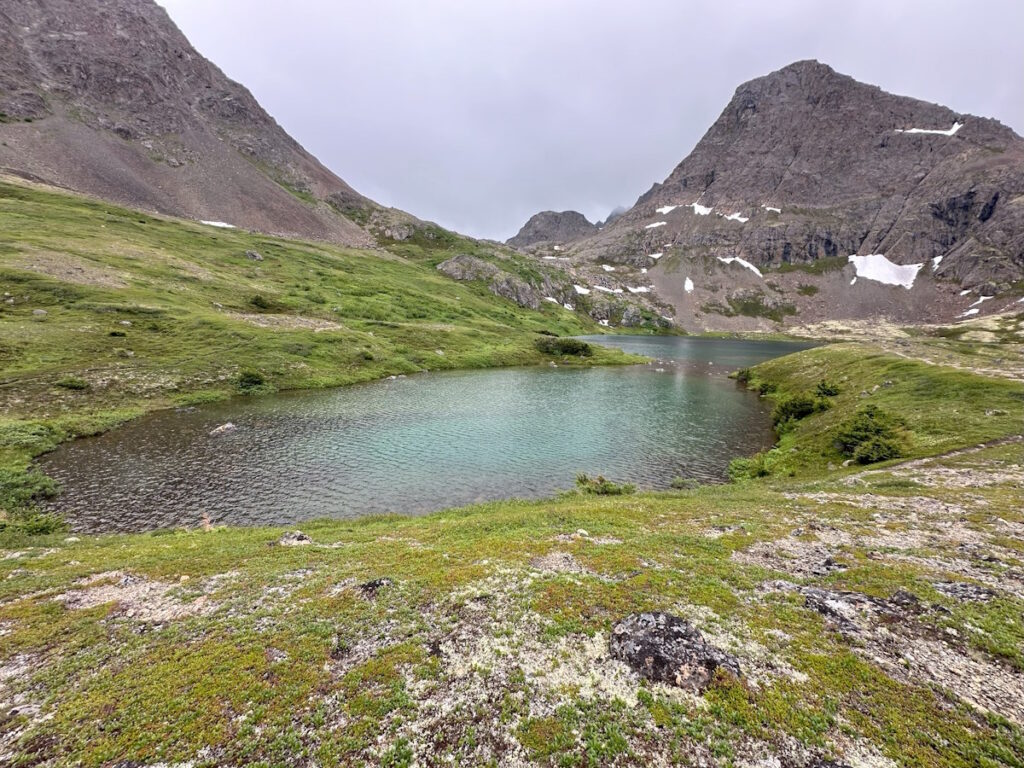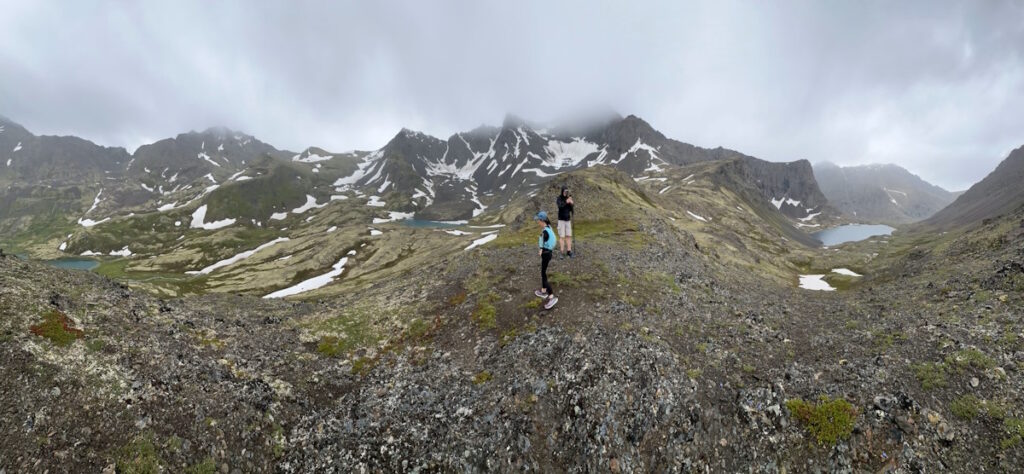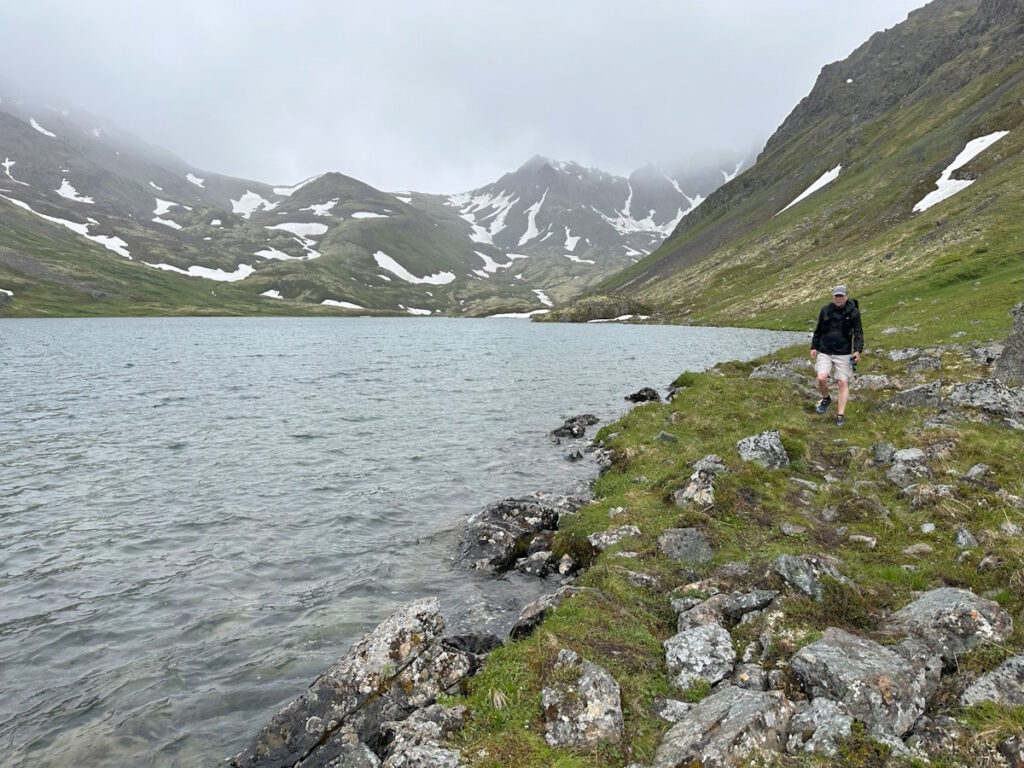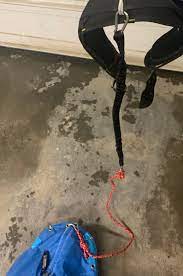After many years of wanting to run this race, a few weeks ago I traveled to northern Minnesota to run the Arrowhead 135. While this race prides itself in being in the coldest part of the country at the coldest time of year, I could tell from the upcoming forecast that we were unlikely to see very cold temps this year. If anything, I would complain that it was too warm!

Taking a few steps back first, I arrived in International Falls on Saturday, with the race starting on Monday morning. This gave me time to do some last minute shopping for the race, and then get over to the mandatory gear check and pre-race meeting on Sunday. That night, I spent a few hours in my hotel room stressing over gear, making some last minute decisions on exactly what to carry with me, and getting my sled all packed up and ready for the morning.
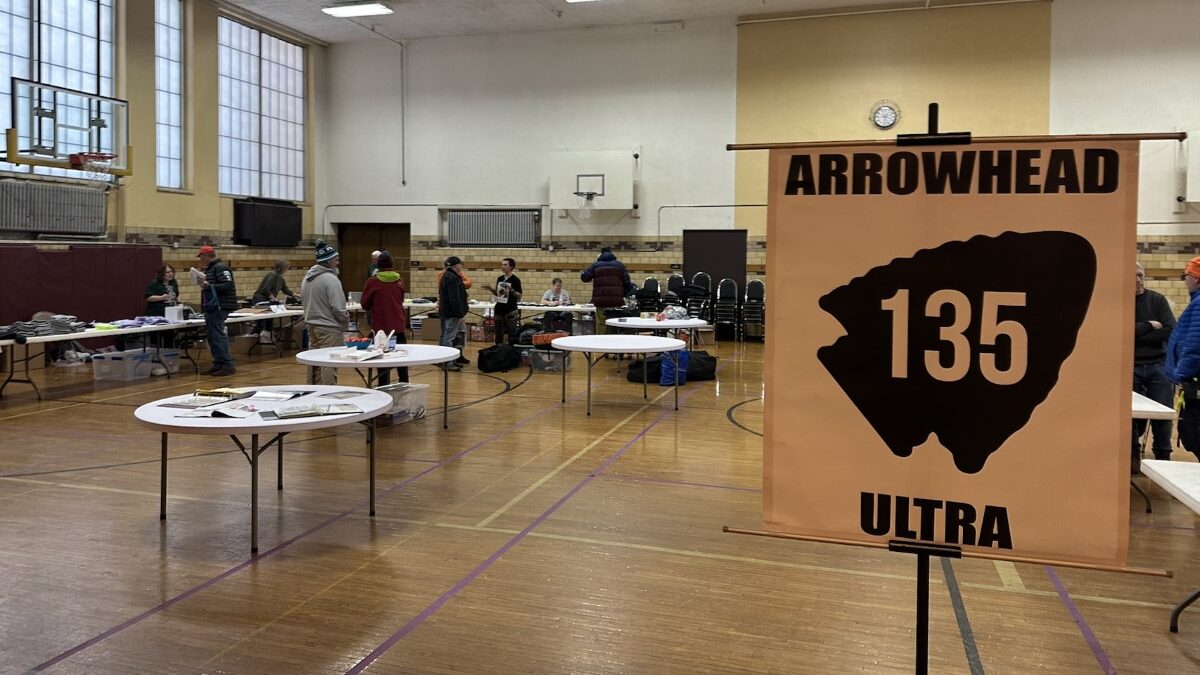


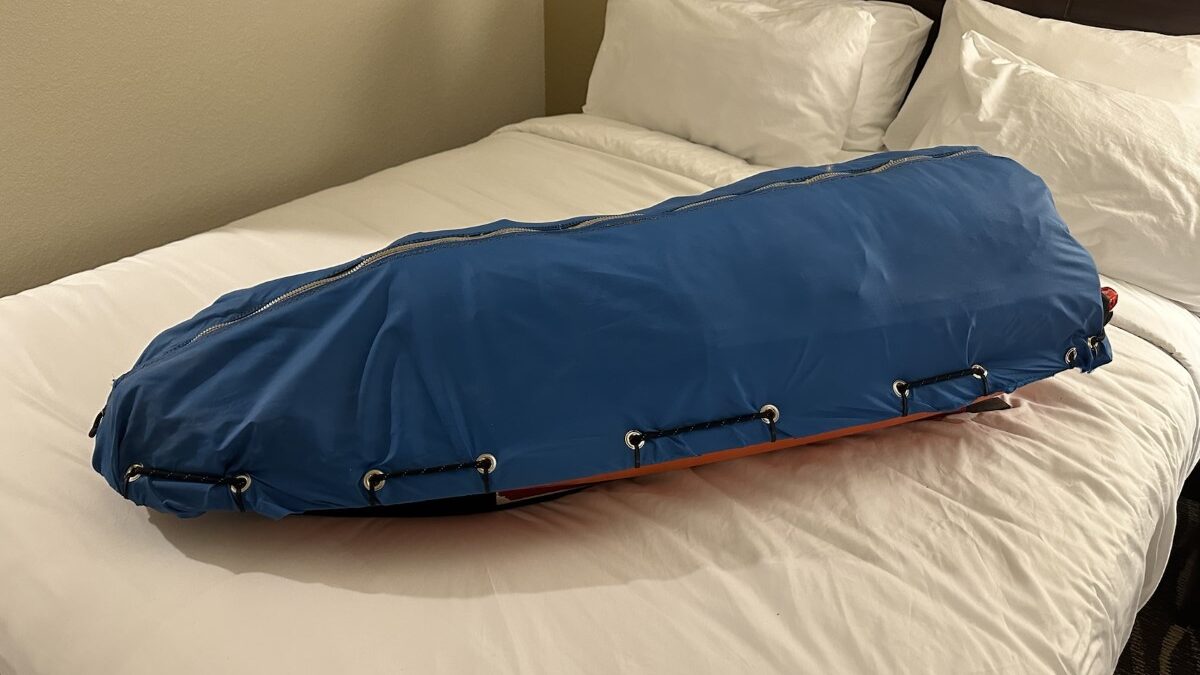
Bright and early Monday morning, all the racers were gathered at Kerry Park in International Falls, ready to embark on our 135 mile journey. The temp was about 22F, with a light breeze. Just about perfect, but I knew it would get warmer during the day once the sun came up. Just before 7AM, there are fireworks to celebrate, and then the race director shouts “release the hounds!” to send us all off down the trail.
I get so amped up and anxious before a race, I want the thing to just get started. After all the months of training, preparation, and planning, once the race actually starts all that stress and anxiety just melts away, and all there is left to do is run. All the hard work is done. The actual running of the race is the reward at the end of the long journey of getting to the starting line.
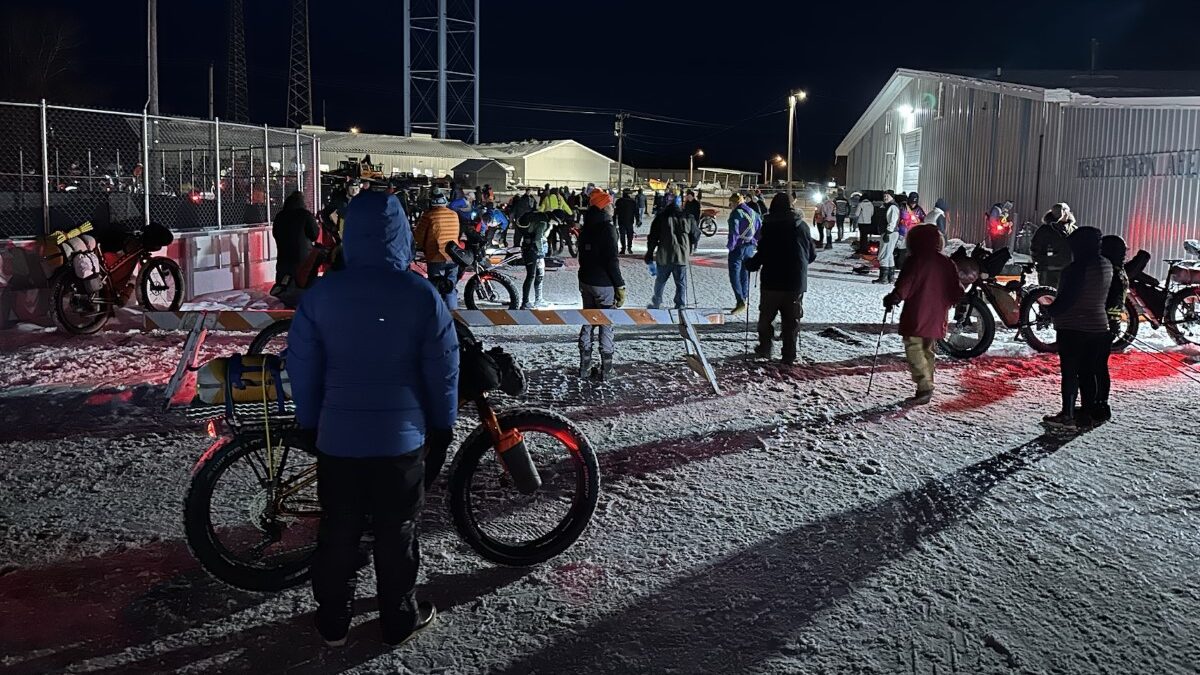


The first section is about 35 miles. Early on, everyone is bunched together pretty closely, and I talked to a number of different people as we took turns passing each other, settling into our own paces for the day. The trail is generally nice and firm, and the running is pretty easy. This first section is pretty flat, so if anything I have to force myself to slow down.
My wife joined me on this trip, although this race doesn’t allow for an actual “support” crew. She’s allowed to meet me at the checkpoints, which are certainly a mental pick-me-up, but she can’t actually provide me with any aid. There is a major road crossing around mile 18, where she met me to offer a quick cheer.
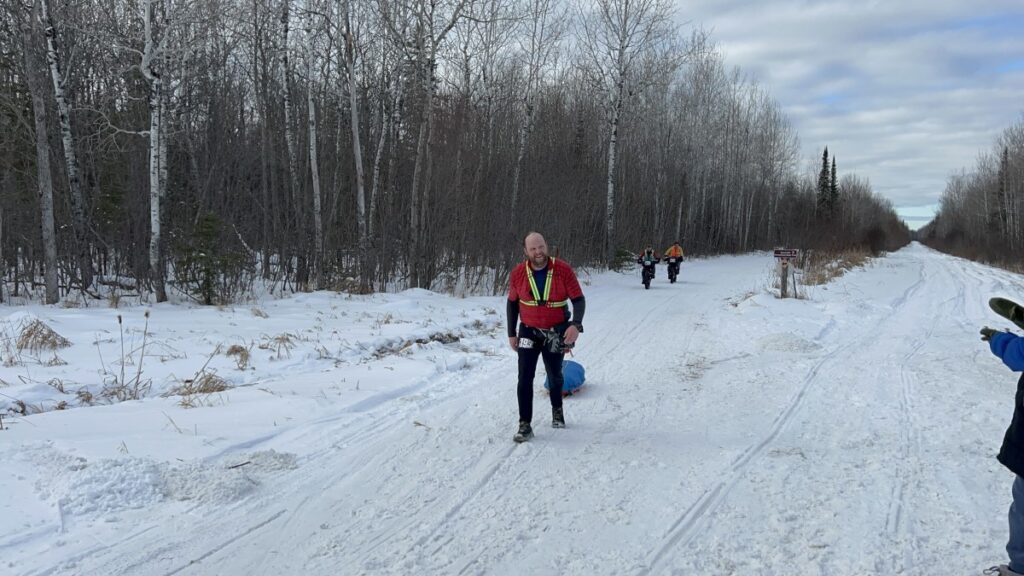

By this point, it’s mid-day and the temp has raised up into probably the low 30s. The trail is still nice and firm, but the jacket I have on is proving to be too heavy, and I feel like I’m getting overheated and sweating too much. In these winter ultras, you have to keep on top of your moisture management. If you get too hot and sweaty during the day, then that sweat will quickly cool you down when the temps drop at night. So I took a quick stop to take my jacket off, and throw on a thin quarter-zip shirt.
Before too much longer, I reached the first checkpoint at the Gateway General Store. I headed inside to warm up and get off my feet for a little while. One thing I like to do at winter ultras is to pack a smaller bag into my sled, that has everything I might want at the checkpoints, that I can easily grab and bring inside with me. This includes things like a change of shoes, extra socks, Body Glide, etc. For this race, I planned to change my socks at every checkpoint, and to change my shoes at the halfway point.
The race only provides water at this first checkpoint, but racers are free to buy whatever they want from the general store. So while the wonderful volunteers were refilling my water, I bought a cup of soup and a soda. I knew that I would be heading into the night pretty soon, so I figured it would be good to get some caffeine in me.
After just about an hour, I was headed out again. It was getting dark and the temp was already starting to drop, so I put my jacket back on, and pulled out my headlamp.
This next section turned out to be rough. The trail started to get a bit hillier, but nothing too terrible. More than anything, I got super tired. I don’t think I’ve ever felt so sleepy during an ultra before. I normally don’t sleep during these races, and will have maybe 30 minutes or so that I feel sleepy and have to fight through that, but this feeling just kept going on and on. At one point I stopped and took a caffeine pill. Later I stopped again and made myself a cup of instant coffee (I had one of my bottles filled with hot water back at the first checkpoint). None of that seemed to help. I started sleep walking pretty bad. At one point I suddenly found myself just standing in the middle of the trail, not moving. Several times I snapped out of it just as I was walking off the side of the trail into a snow bank.
Eventually I mostly snapped out of this funk, and by then I was getting pretty close to the 2nd checkpoint at mile 70, at Melgeorge’s Lodge. The race has a large cabin rented out, where they are making warm food, and there are some beds if you want to take a nap. Earlier in the night I was thinking I’d need to take a nap here, but of course by the time I actually got there (I think it was around 5AM), I was actually feeling pretty good, and I knew the sun coming up soon would help.
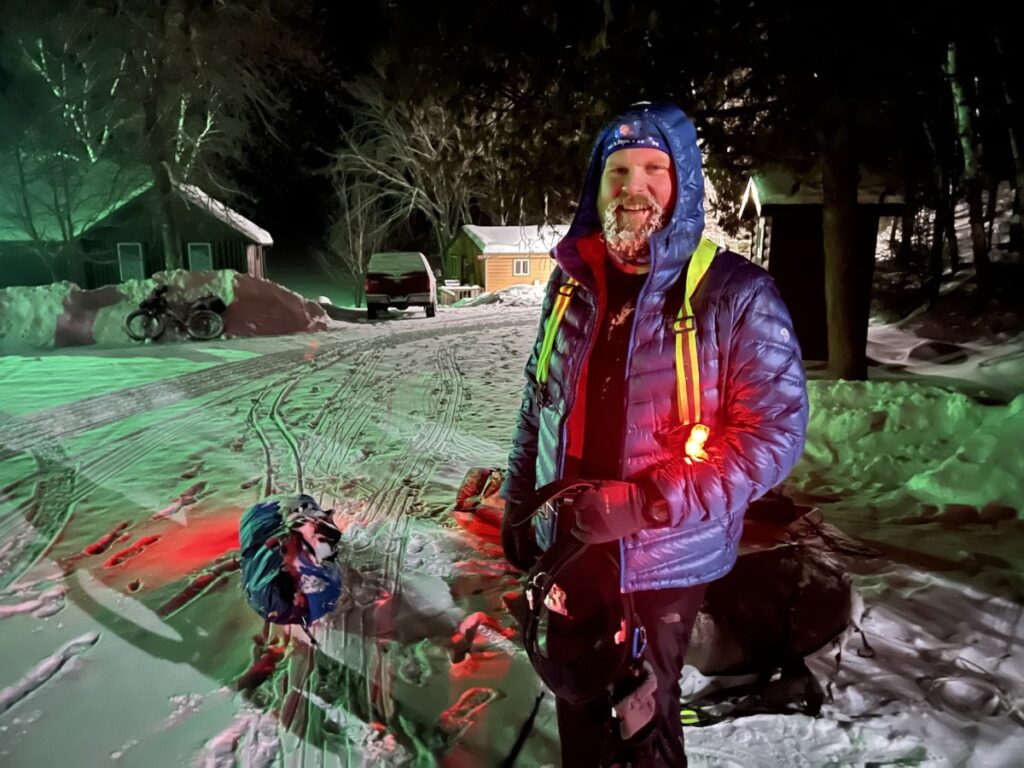
Here I had a cup of soup, a grilled cheese sandwich, and several cups of Coke. I also changed my socks and shoes as planned. I kept my socks off for most of the time I was there to let my feet dry out, but overall they were in pretty good shape so far. They also allow drop bags at this checkpoint (food only), so I grabbed that to restock my sled. After about an hour again, I was headed back out. It was still dark outside, but I knew the sun would start coming up in about another hour.
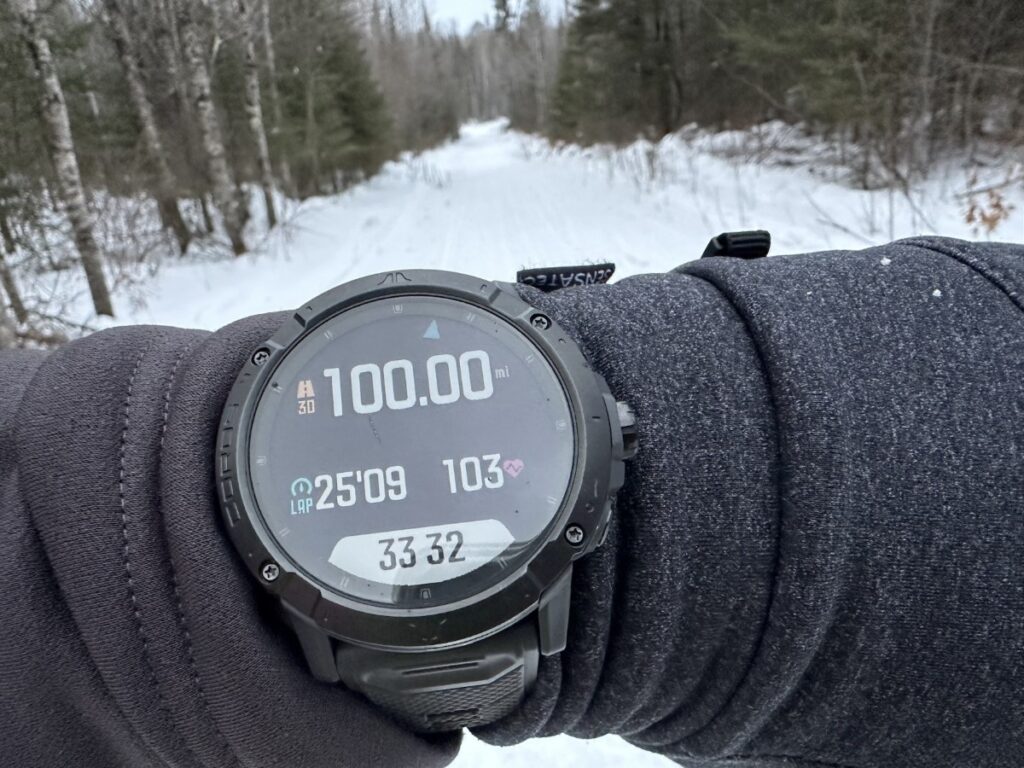
I was feeling awake and alert at this point, which was good, but this next section would turn out to be the most difficult of the entire race for me. First off, it’s the longest section between checkpoints (about 40 miles). It also warmed up a bunch during the day, and the snow was starting to get softer. To make matters worse, a trail groomer came through (twice – once in each direction), and just completely churned up the top couple inches of snow.
And then…came the hills. Lots of short, steep climbs that were difficult enough pulling the sled, made even harder by the mashed potato snow we were dealing with.
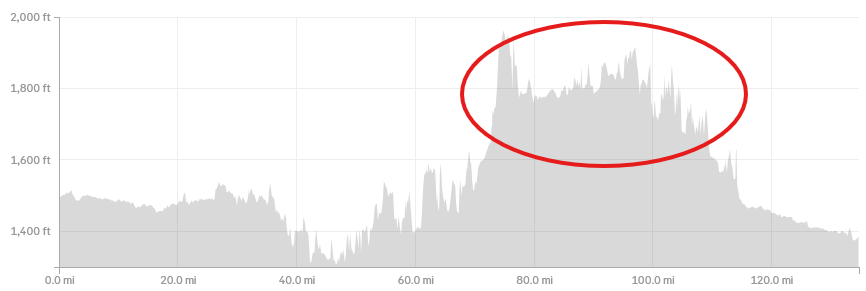
I started watching the elevation profile on my watch, counting the number of hills I had left until the 3rd and final checkpoint. Finally, I arrived at the Embark checkpoint at mile 110. This is a fairly no-frills checkpoint, with a large campfire burning and a heated canvas tent. No food but they did have several hot drink options. I headed inside the tent to sit down and get a good look at my feet. With how warm and churned up the snow was during the day, my feet had been wet for a considerable amount of time. I found that I had a few small blisters, but luckily nothing too concerning. I popped and drained them to relieve the pressure, and did my best to let me feet dry while I rested a bit.
I discovered that the shoes I had just changed into at the previous checkpoint were now wetter than the ones I had worn for the first 70 miles, so I decided to change back into those for the last section of the race. Once again, I stayed at this checkpoint for just about an hour before heading back out to face the final 25 miles. It was around 11PM, so I knew I would likely be in the dark the entire time. Before heading out, I made myself another instant coffee for a caffeine jolt. I could smell the finish line by this point, and I had no interest in taking a break to nap. I was told that there was really just one more big hill to climb shortly after leaving the checkpoint (affectionately named Wake ’em Up Hill), and then it was mostly flat to the finish.
I was able to run a little bit here and there during this section, but mostly it was just power hiking. That being said, I felt like I was able to keep a pretty good pace, especially considering I was 110+ miles into this race, and going on 40+ hours with no sleep. I kept a close eye on my pace on my watch, using it as a distraction, and a way to keep me focused and alert as I went into the 2nd night. I was excited when I passed 2 other people on foot during this last section, and I just tried to keep focused on maintaining a brisk pace, and really making good use of my trekking poles.
As these last miles ticked by, the lack of sleep was really starting to get to me. I didn’t feel sleepy in quite the same way I did that first night, but I knew I needed to do something to keep me alert and moving well. The hallucinations were also getting pretty bad – nothing really crazy, but just seeing lots of things on the side of the trail that ended up being snow piles and tree branches. I don’t normally listen to music much during these races, but I knew I needed something to occupy my mind. So I popped in one earbud (I like to keep the other ear open so I can still hear what’s going on around me), and started singing out loud to every song that came on. This actually worked really well for me – the sleepiness was wearing off, although the hallucinations were still in full force 🙂
I started doing some mental math, and realized that if I could keep up my current pace, I could finish in under 48 hours. The final cutoff for the race is 60 hours, so this number really didn’t mean anything in the big scheme of things, but it was something to keep me motivated and to keep my mind occupied.
Eventually, I could see the lights of Fortune Bay Casino, and I know that my long journey was almost over. There are a few final twists and turns in the trail, and you don’t get there quite as quickly as you think you will. My wife must have caught a glimpse of my light, because I heard her screaming before I saw the finish line myself. But then it was there, and I picked up the pace a bit, and jogged into the finish. I crossed the finish line 47 hours and 21 minutes after leaving the start back in International Falls. I was 14th out of 40 finishers on foot (out of 74 who started).
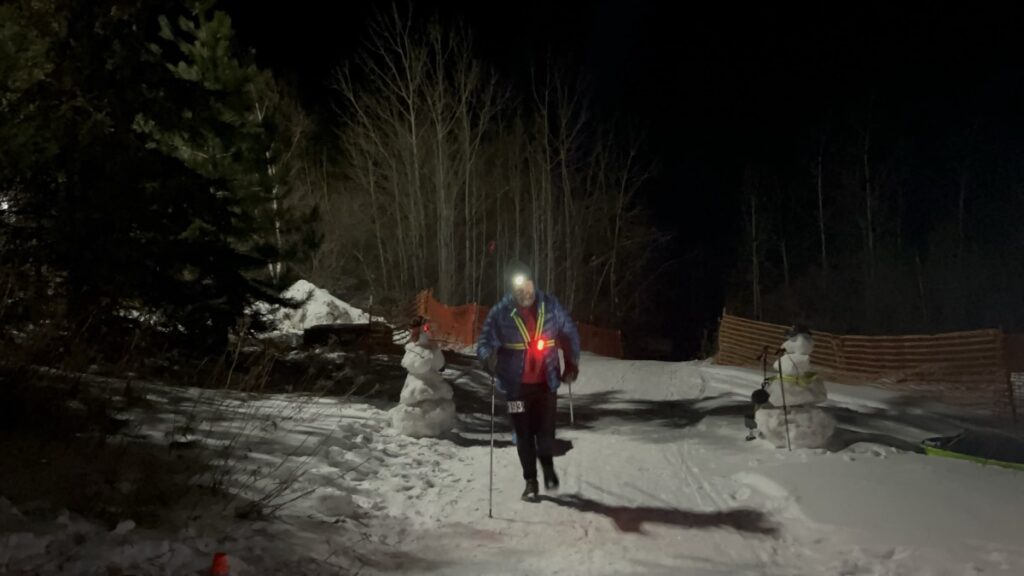
Everything about this race was great. The race directors, the volunteers, and the other racers were all fantastic. Even though I wasn’t a local, and came into this race not knowing anybody, it was easy to make friends on the trail, and people seemed excited to cheer on the guy from Alaska.


